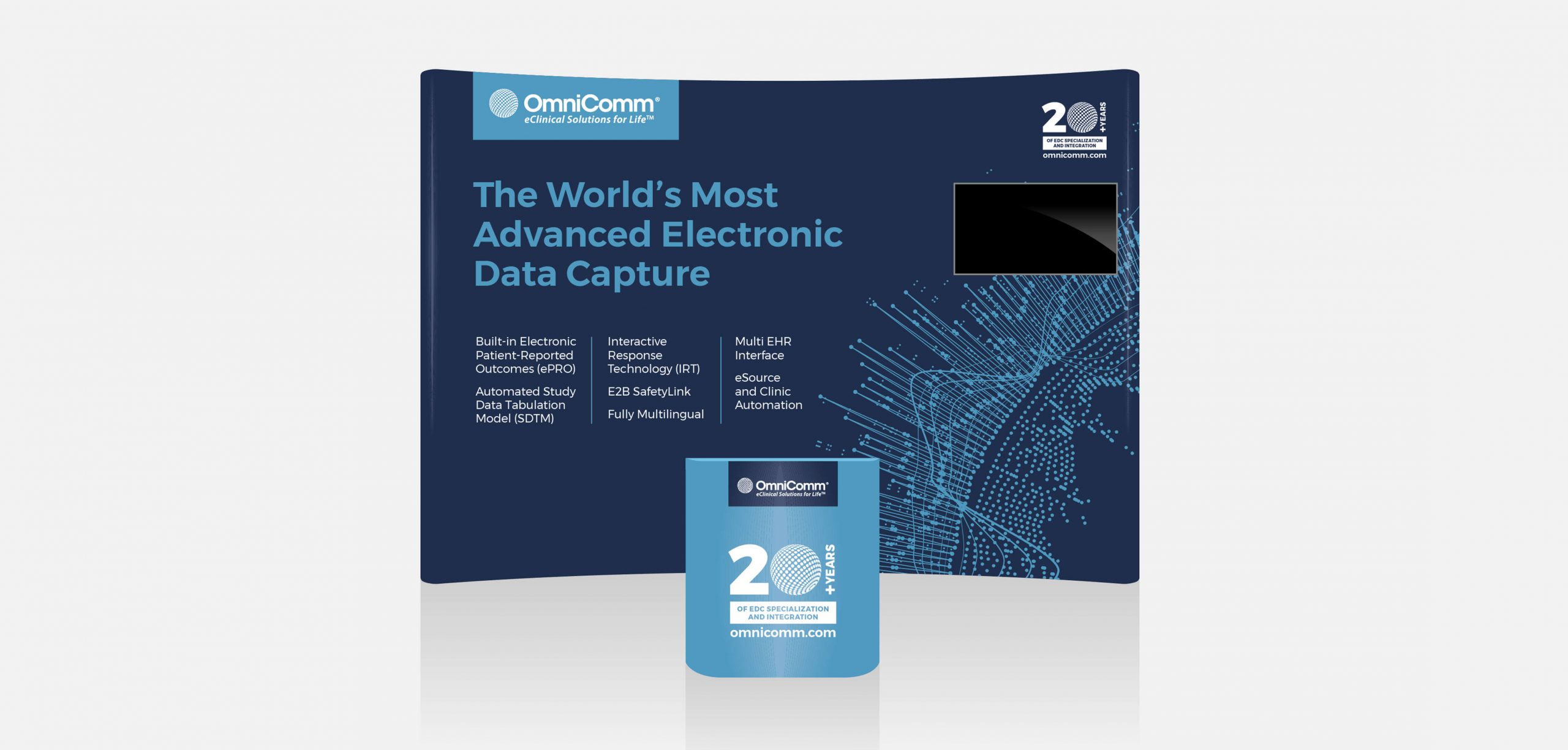When exhibiting, you will probably be limited only by space and budget. But, given the importance of a great-looking stand on the event’s success, you’ll want to maximise both. It’s also important to consider whether this will be for a one-off event, or whether you’ll want to reuse the collateral. Luckily, there are plenty of options out there, with these being some of the most popular solutions:
As the name suggests, the design of pop-up stands makes them easy to transport and erect in minutes. Made to fit in smaller exhibition spaces and comprising a collapsible frame to which you can attach printed graphic panels, they’re a versatile option when you need a back wall for a show. For a more contemporary look, you can also place a printed fabric covering over the frame.
Designed so that you can easily change the graphics from exhibition to exhibition, these stands are easy to put up and pack away, requiring no tools for assembly, with the graphics attached using magnets.
Easy to reconfigure and reusable, modular stands occupy the middle space between a pop-up and a custom-made bespoke stand. Made up of an aluminium frame, you can set them up in different configurations to fit the size available, with additional parts easily added to grow the display. The graphics are usually printed on Foamex boards or fabric and are easily attached to the frame. They’re also simple to erect and can be put up by just two people with no tools required.
Although a more expensive option than a pop-up, their versatility and longevity make them an excellent investment.
Additional embellishments could include LED lighting or TV screens.
The most expensive option, but the one that gives you exactly what you want, bespoke exhibition stands are custom designed and built for an individual event and offer endless possibilities. This comes with downsides and up. Different from the other stands described here, bespoke stands are difficult to set up and take down. It’s likely they’ll involve wall panels and large structures that require a specialist team to install. They’re also more difficult to adapt for subsequent shows – although some companies will store your stand and rearrange the modular items in different configurations.
The upside is, of course, that you have full control over every element of the stand, from materials, size and additional embellishments.
An exhibition stand (or booth) is a promotional display used to attract attention in an exhibition centre. In the UK, the terms ‘stand’ and ‘booth’ are often used interchangeably, although booth is used more frequently when referring to a shell scheme. Booth is also more common in the US.
In a large exhibition hall, it’s easy to get lost amongst hundreds of other stands. As we’ve already seen, 48% of exhibitors believe an eye-catching stand is the most effective method for attracting attendees. But what do you need to include on your stand to make you stand out?

“

In a crowded hall, it’s essential that your stand graphics are clear and eye-catching. Because they’re a small element in a large room, it’s essential to consider how attendees will view them from different distances.
Unless you have an in-house team, it’s likely you’ll use an external graphic design agency to create your stand graphics. To help them design an eye-catching stand that attracts attention and reflects your brand, they’ll need a few things from you.
If you don’t already have a stand shell system, your chosen design agency should be able to put you in touch with stand designers. Likewise, they should have links to printers who can print your graphics.
Based in Cambridge, JDJ Creative has partnered with businesses in a variety of sectors around the world to design their exhibition stand graphics and other marketing collateral. For an informal chat about your upcoming exhibition, please get in contact with our friendly team today at hello@jdjcreative.co.uk or fill in our contact form.
Share
Sign up to our monthly newsletter to receive your guide to thought leadership design.

Sign up to our monthly newsletter to receive your guide to annual report design.

Sign up to our monthly newsletter to receive your guide to sustainability report design.
